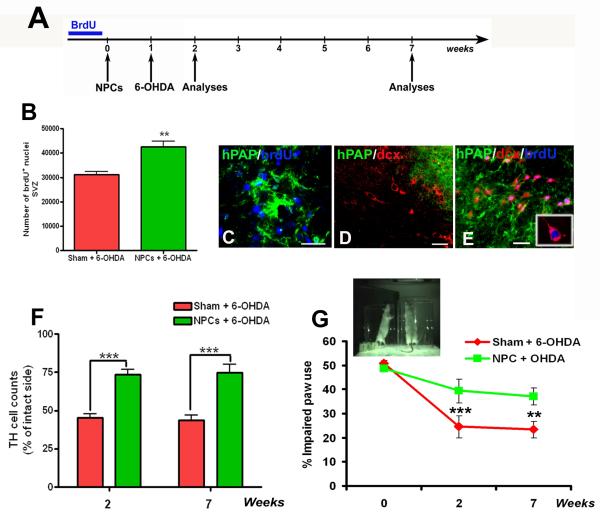Figure 1.
Transplanted NPC mediated nigrostriatal protection and endogenous precursor activation
Schematic showing the timeline for the ‘long-term NPC transplantation experiment’ (A). After 3 days of brdU adminstration, 100,000 hPAP+ NPCs were transplanted into the striatum and SN of host rats. One week later 4μg/μL of 6-OHDA was infused into the MFB, and animals were analyzed behaviorally and histologically at 2 weeks and 7 weeks post transplantation. As reported previously (Madhavan et al, 2009), at 2 weeks after implantation, stereological counts through the dorsolateral SVZ confirmed the presence of a greater number of brdU nuclei in NPC transplanted animals compared to controls (B). Also, brdU labeled endogenous cells were found adjacent to grafted cells (C), many of which were dcx-positive but hPAP-negative suggesting stimulation of host neurogenesis (D, E). We found significantly (p<0.001) increased preservation of TH expressing dopamine neurons in the SN of NPC transplanted animals through stereological estimation, at both 2 and 7 weeks after transplantation (F, raw cell counts presented in the results section). Also behaviorally, the NPC transplanted rats performed significantly (p<0.05) better in the spontaneous paw placement cylinder task as compared to non-transplanted controls (image and graph in G) at both time intervals. [**p<0.05, ***p<0.001, one way ANOVA for both F and G]. Scale bars: C, D, E – 20 μm

